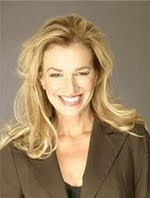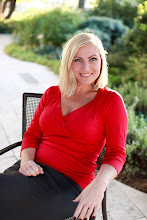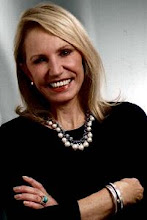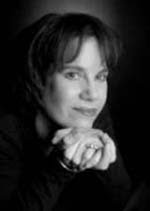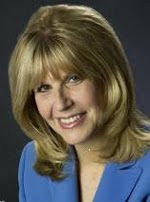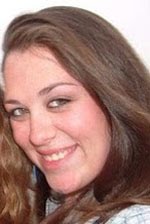by Andrea Campbell
Most everyone I talk to is upset or depressed over the Casey Anthony case, which just recently found her not guilty in the death of her child. Since you would have had to been living in a cave to not know about the case, I will assume you are upset as well.
There is a lot to talk about the forensic evidence in this case, and what for me seems like quite a lot of evidence for a case of this type. But almost all of it seems to be controversial in one way or another. Since I write to you in colloquial terms—as if speaking to a friend—I try not to use terminology that is science jargon, and tend to explain things simply and in a way that anyone can understand.
 |
| Clipart.com |
Types of Evidence
The first important element we can discuss is what types of
evidence are used in a court of law. There are more than you may know: direct, circumstantial, biological, reconstructive, associative and, individual or class characteristics.
Direct evidence is thought of as established fact. These are generally eyewitness statements or confessions.
Circumstantial evidence is not absolute proof but provides general knowledge and if you connect the dots, would seem to make sense or act as a logical conclusion. Typically, forensic evidence falls into this latter category. To folks in the criminal justice industry though, forensic science is generally more reliable than direct evidence because eyewitness testimony is sketchy, with people unable to recall events or positively identify suspects.
Biological evidence is anything that comes from a living organism and, in this case, would be the hair found in Casey Anthony’s trunk—this evidence type stems from body functions or fluids shed at the scene.
Of course,
physical evidence can be found on inorganic items and some examples are: fingerprints, tool marks, paint, firearms and so on.
Reconstructive evidence helps an investigator figure out the five clues: who, what, where, when and how. The door that was pried open tells us how the perpetrator got into the house for example.
Associative evidence is what ties the suspect to the crime scene. The Casey Anthony case could have been made a lot easier if fingerprints had been found on the duct tape that covered toddler Caylee Anthony’s nose and mouth.
And the typing of evidence, either
individual or differentiating is referred to as
class characteristics. It follows that anything that is individual, can be narrowed down to one person or calculated as belonging to a very small group of people. The principle used to analyze materials and come to the assumption that it is individual is that no two things are exactly alike. A pair of shoes will exhibit characteristics when worn, unlike any other—so if those shoes leave a print impression at a crime scene and they are later found in the suspect’s closet, that leaves them open for an individual characteristic.
Differentiating class characteristics, on the other hand, could be the type of bullet that came from a gun. The caliber matched to a gun could make for a possible murder weapon. A found .38 caliber bullet means the weapon size is the same, so a .38 caliber bullet differentiates it from a shotgun.
Experts thought the forensic evidence in Anthony's car would be
pivotal evidence for the murder trial. The car tested positive for chloroform and human decomposition and a strand of Caylee's hair was found in the car's trunk. Also, a cadaver dog, Gerus,—trained to find human remains—alerted on Casey Anthony’s car, a Pontiac Sunfire, and his handler testified to that occurrence.
Forensic Air Testing
Today we will talk briefly about the air testing in the car trunk. The forensic community has been using air tests for a long time. The science of chemical detection is forensic toxicology and is a means to separate and analyze chemical substances. The best example of common testing is when law enforcement uses a
Breathalyzer to determine the blood alcohol content in a drunk driver for example.
The Smell of Decomp
"Once you smell it, you will never forget it." This comment and others comes from a site that has anecdotal comments from
police and others whom have all smelled death. Human decomposition is a permeating smell and is often said as “hard to describe” but that doesn’t mean it isn’t distinctive. When Dr. Arpad Vass went on the stand to testify about the air samples taken from Casey Anthony’s car, I assumed that evidence was more than compelling. He spent a lot of time explaining his expertise in research about the smell of human decomposition. Vass works at the Oak Ridge National Laboratory in Tennessee where he analyzes the odor of death by working with cadavers at a 3-acre body farm, specifically used to study death and decomposition.
According to an
ABC news report, "He [Vass] is essentially working towards finding a signature for human decomposition that will lead to the creation of an electronic detector that does the work of a cadaver dog. His research is already being used by the FBI to create a database of the chemical compounds found in human decomposition."
Vass said that the air samples taken and preserved in a can from the trunk of Casey Anthony's car had an abundance of chloroform, a sign of human decomposition and a chemical that also can be used to commit murder.
"I essentially jumped back a foot or two… I was shocked that that little itty bitty can could have that much odor associated with it… I would recognize it as human decomposition," Vass told jurors.
The Body in Death
"After we die and the bacteria proliferate in our body and start breaking down our muscles and our fat and organs, vapors, gases, are formed with beautiful names like
cadaverine and
putrescine that are a particular structure that are easily picked up in the toxicology lab if they’re collected from the area, the air that the body was in," said respected forensic pathologist Dr. Michael Baden. "If there was a dead body in the trunk of the car and they collected the air sample, they should be able to find those chemicals."
Entomology Report
In addition, flies and fly larvae found in the trunk of Casey Anthony's Pontiac suggest that the body had been decaying there for three to five days, according to
testimony by an insect expert. The entomologist believed that Caylee's body had already undergone a brief period of decomposition before it was put into the trunk, and he cited the presence of a gnat-like fly that appears only after a body has started to decompose.
This testimony rebutted defense claim that bad smells people reported could have come from garbage, but it turns out the same type of fly is not attracted to household trash. 




































